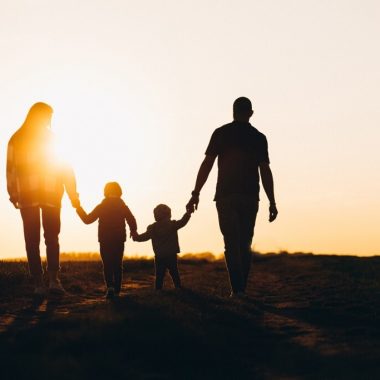Interesting Facts and Information About Bones for Kids
God’s most wondrous creation is human bodies. It has so much going on inside, from the head to toe! There are so many things we need to know about our bodies, but let us start with some basics before diving in.
Layers of Bones
Now that we know what a bone is let us learn deeper. The bone consists of four layers, and these are:
The periosteum is a layer of tissue that sits on top of your bone and provides protection for it. It has nerves, blood vessels as well as other supporting cells to help keep you strong!
The compact (cortical) or dense tissue is the outermost layer that protects your body’s internal organs. It accounts for around 80% of an adult bone mass and can be found throughout our bodies
The spongy tissue that makes up most bones is a porous, honeycomb-like material which gives the bone its strength yet keeps it lightweight. Lying within this compact but hard layer are firm cells with less density than an average human hair – making for one tough skeleton!
The spongy or cancellous tissue is what gives bones their strength and flexibility. It’s also responsible for making them lightweight. The lying within the compact tissue is firm but less hard than dense.
Bone marrow is the innermost layer of our bones and it’s well protected by spongy tissue. It has a jelly-like appearance, with blood cells being produced here! The bone marrow is a very important place because it produces three types of cells: RBCs that carry oxygen around your whole body; WBCs which provide immunity and platelets for blood clots.
Types of Bones
The different shapes and sizes of bones in our bodies may be surprising, but they’re an important part to how the human body functions. The four categories of bones in our body can be broadly classified as follows.
Long Bones
Long and thin, the primate’s bones serve a variety of purposes. They act as levers during bodily movements like those found in arms or legs with shorter versions being used for wrists ankles knees capriceously!
Short Bones
Short bones are just about as wide off-their long and consist mainly spongy bone surrounded by compact layers. The human body is made up of a variety of bones that allow for movements at different joints. The most notable ones include wrist, ankle and knees which can be moved with ease thanks to their cubed shape!
Flat Bones
Flat bone structure is crucial for structural stability and foundation. The shape of your torso, shoulder blade etc., all depend on how you’re built! Under this category, the long bones protect our delicate tissues from injury.
Irregular Bones
The most complex of shapes, bones can be short or long and flat. They also come in many different varieties with unique requirements that determine their shape such as facial structures and spinal column regions among others
How Do Bones Grow
What’s more, bone growth has caught many people off-guard. Most of us assume it is genetics but this isn’t always true! The consistency and healthy habits that you develop in your childhood can have a lasting effect on how tall or strong you grow. Before we get to the habits, let us have a brief idea of how bones grow.
When we’re born, our bones contain about 300 more than the normal 206. What causes this reduction? How does bone growth affect rates of development in babies with cartilage-made structures for their first few months alive! When children grow tall, their bones ossify. Layers of calcium and phosphate deposit themselves on the cartilage cells until they die leaving small pockets behind which causes them to gradually get bigger as well increase in height up until around twenty-two or so when most all growth has stopped but there may still be repair if something happens like fractures etcetera
Facts About Bones for Children
1. The more, the merrier, but where?
More than half of all the bones in the human body are in the hands and feet. That is quite so much, right?
2. Which is the longest? Is it in the arm or the leg?
The longest bone in your body is the femur or the thigh bone. The average adult male femur is 48 centimeters.
3. There are you the smallest one?
Stapes is the smallest bone in your body. It is a bone found in the middle ear and is just three millimeters long.
4. Can longest and strongest be the same?
Surprise! Yes! The longest and strongest bone in your body is the same; the thigh bone.
5. Guess how many in a minute?
The bone marrow creates around 120 million red blood cells in a minute.
6. One plus one is equal to a joint!
When two or more are linked together, it is called a joint. An example is the elbow joint that connects the upper and lower arms.
7. That breaks easily? lass or
Toe bones are the most fragile in the body.
8. Interested in studying bones?
The scientific study of bones is called osteology, and someone who studies osteology is called an osteologist.
9. Does healthy food enrich bone growth?
Yes, they do. Foods like milk, cheese, and other dairy products are sources of calcium, a vital component of bones. More than 99 percent of our body’s calcium is held in our bones and teeth.
10. Is funny bone a bone?
No, it is not. When the elbow hits a certain way, the ulnar nerve is triggered.
11. How are the brain, heart, and lungs protected?
By bones, of course. Skull, ribs, and the spine keep us the way we are.
12. Do bones fall sick?
Yes, they do. Osteoporosis is a common bone disease caused by low bone density and bone loss. Rickets, etc., are a few others.
13. How many are in the skull?
An adult human skull contains 22 bones, eight cranial and 14 facial bones.
14. Which is the largest joint?
The largest joint in the human body is the knee.
15. Does growth always happen?
Bones grow and constantly regenerate till the last breath.








